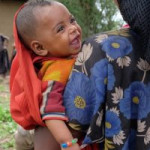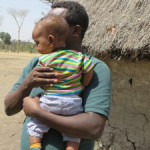New journal article by Derek Headey, Kalle Hirvonen, John Hoddinott and David Stifel. Abstract: Child dietary diversity is poor in much of rural Africa and developing Asia, prompting significant efforts to leverage agriculture to improve diets. However, growing recognition that even very poor rural households rely on markets to satisfy their demand for nutrient-rich non-staple >> Read more Source: Ethiopia Strategy Support Program
Trade, value chains, and rent distribution with foreign exchange controls: Coffee exports in Ethiopia
ESSP Working Paper 136, by Seneshaw Tamru, Bart Minten, Johan F. M. Swinnen. Abstract: Exchange rate policies can have important implications on incentives for export agriculture. However, their effects are often not well understood. We study the issue of foreign exchange controls and pricing in the value chain for Ethiopia’s coffee - its most important >> Read more Source: Ethiopia Strategy Support Program
Reforms in Agricultural Extension in Bangladesh: Book Chapter
Agricultural extension in Bangladesh is key for improving agricultural productivity, food security, and recent IFPRI research in Bangladesh even shows that agriculture extension holds promise for leveraging nutrition-sensitive agriculture. Nevertheless, research shows that its capacity remains limited in this South Asian country. The Department of Agricultural Extension (DAE), the Department of Agricultural Marketing (DAM), and […] Source: IFPRI Bangladesh Country Office
The transforming value chain of Ethiopia’s “orphan” tef crop
Tef is called an “orphan” crop in Ethiopia as it receives relatively little attention from the Ethiopian government and from international donors. Given the low yields of tef compared to other crops, it is often viewed as a low-priority crop and relatively little is known about the value chain of tef. We fill some of >> Read more Source: Ethiopia Strategy Support Program
Behavior change interventions delivered through interpersonal communication, agricultural activities, community mobilization, and mass media increase complementary feeding practices and reduce child stunting in Ethiopia
Appropriate infant and young child feeding practices are critical for optimal child growth and development, but in Ethiopia, complementary feeding (CF) practices are very poor. Alive & Thrive (A&T) provided intensive behavior change interventions through 4 platforms: interpersonal communication (IPC), nutrition-sensitive agricultural activities (AG), community mobilization (CM), and mass media (MM). The aim of this >> Read more Source: Ethiopia Strategy Support Program
- « Previous Page
- 1
- …
- 164
- 165
- 166
- 167
- 168
- …
- 200
- Next Page »


